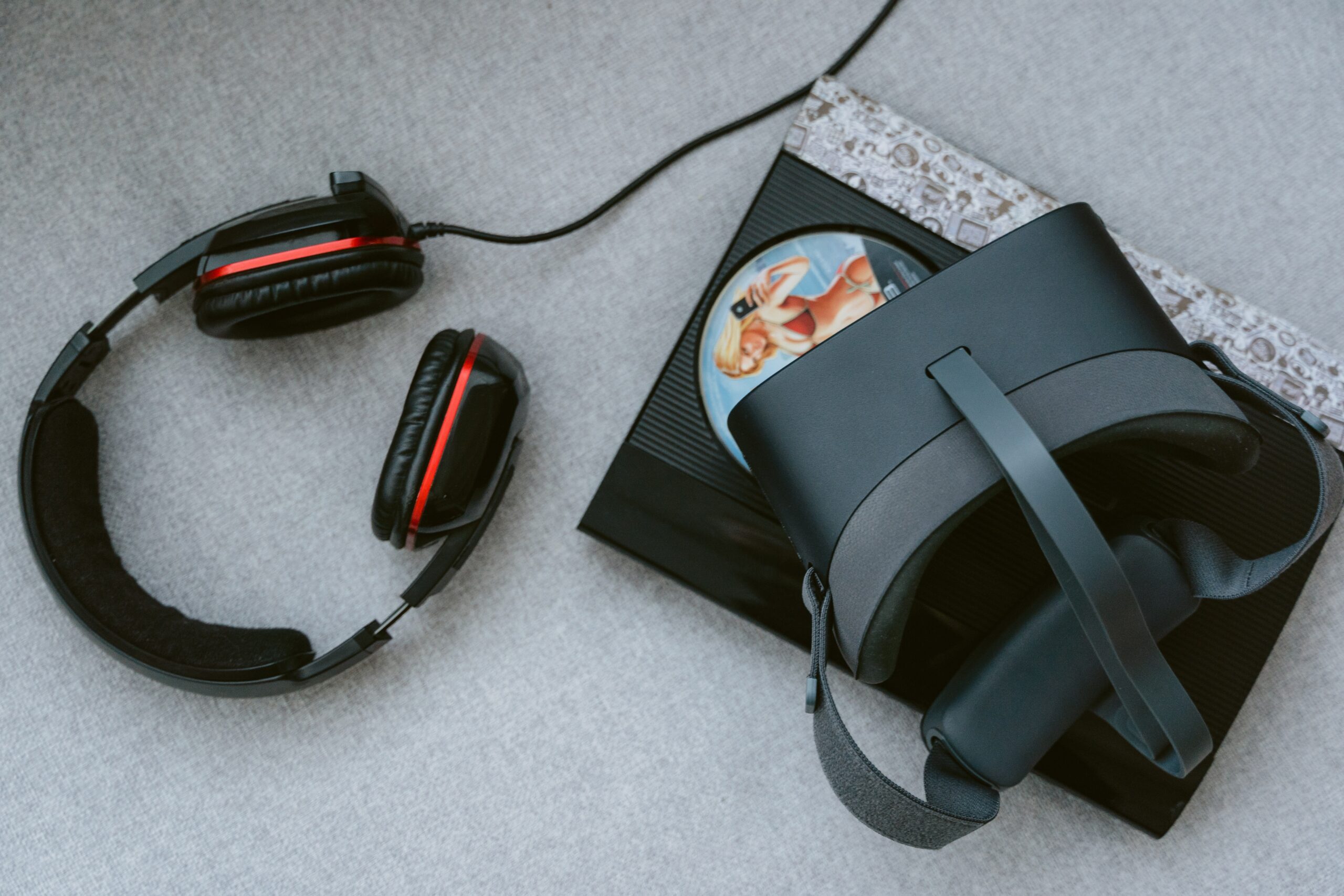Compatible VR Headsets with Mac:
Last update on 2024-07-12 / As an Amazon Associate, we earn from qualifying purchases. Learn more about us.
You’re probably a mac user in search of answers to why you can’t seem to find any suitable VR headset for your device. Virtual Reality seems to be the future of gaming and entertainment. Where’s the perfect Mac-compatible VR headset you can get for yourself today?
For a company that’s always ahead of the curve with new technology, Apple seems surprisingly behind on VR.
However, with the development of Mac-compatible eGPUs and rumors of Apple releasing their own VR headsets, there’s still some hope for you. But before that happens, what are your options?
Here, with some research, I attempt to help you answer a pressing question that you’ve probably had for a long time.
Do any VR Headsets work with Mac?
At the moment of this writing, only one VR headset brand will work with your mac. That’s the HTC Vive, and the HTC Vive Pro. I wish this list was longer, really, but that’s all mac users can get.
Apple, until recently, hadn’t focused on VR or configured macs to support this technology. For this reason, many VR headset manufacturers continue to target PC users because they have access to devices that can easily support virtual reality.
Only HTC and Valve have dared venture into VR headsets for mac. These two companies collaborated to build the Vive to support the macOS also, which made the HTC VR headset the only reliable choice for you and your mac.
Just as you’d think things might get better, they don’t.
Check some standalone VR headsets which don’t need a computer or Mac to work.
SteamVR, the only VR system mac users could get for gaming, is dropping support for the macOS soon. This puts the future of macs and VR gaming on hold, for now. That’s not all.
There are other hurdles you must jump if you intend to purchase a VR headset for yourself.
Later macs (2015 and newer) run on Radeon Pro 555 or 560. Most iMacs don’t do any better either, running on Radeon Pro 570 or 580.
These GPUs are insufficient for your VR headset. You may have to upgrade your Mac with an external GPU if you want better results.
Your mac must first meet Vive’s requirements, and you’ll have to enhance your device to a certain level. You’ll also have to update your macOS to High Sierra or later.
Otherwise, your device won’t support an external GPU. Also, your mac should have a Thunderbolt 3 port, or at least an adapter where you’ll plug in your eGPU.
Check 3 Popular VR Headsets for iPod Touch
As for Macs made on or before 2015, you may not require a GPU upgrade. They have robust inbuilt graphics cards.
How to know if a VR Headset is compatible with mac?
Many VR headsets already aren’t compatible with mac, so the easiest way to know is to look for a brand that says it does. The only headset that sells this value proposition and currently supports your mac is the HTC Vive.
See Do VR Headsets Need A Computer?
Best VR headsets for mac
HTC Vive
Last update on 2024-07-12 / As an Amazon Associate, we earn from qualifying purchases. Learn more about us.
The HTC Vive was first announced back in March 2015 at the HTC Mobile World Congress. It became available for purchase to consumers in 2016.
At that time, it was considered as much better than the Oculus Rift. While the gap between these two devices has since been closed, this virtual reality headset remains an easy selection for anyone looking for a Mac-compatible VR headset.
The Vive headset comes loaded with eye-popping capabilities. The device has a 90 Hz refresh rate for a smooth viewing experience. Each eye gets 1080 X 1200 pixels for a combined, crystal-clear 2160 X 1200 pixel display.
What an outstanding visual experience! HTC also equipped it with one front-facing camera that you can use to view your surroundings without taking the Vive headset off.
A software system uses the camera to identify moving or static objects in your room and give you feedback for safe navigation. This virtual reality headset also comes with a host of Infrared sensors in the divots, as well as G-sensors, gyroscopes and proximity sensors.
Alongside this headset is a pair of vive controllers equipped with a trackpad, grip buttons, a dual-stage trigger and about 6 hours of use per charge.
Using the SteamVR tracking system, you can monitor your controller’s movements to a fraction of a millimeter.
The HTC Vive also comes with base stations that create a 360-degree virtual space for your immersive gaming experience.
Their precision is unparalleled, picking up your headset and controllers with surgical accuracy. These stations reduce the length of wire needed, making them as practical as possible.
Other exciting enhancements you can get with this headset include a Vive tracker, a deluxe audio strap, an optional wireless adapter and Valve index controllers.
Pros:
- HTC Vive is quite capable, even five years after its development
- Outstanding sensor and tracking accuracy
- Offers a fully immersive experience
- Comes with motion controllers and external sensors for lovers of whole-room VR
Cons:
- The HTC Vive is quite expensive.
- SteamVR is ending all support for macOS
HTC Vive Pro
Last update on 2024-07-12 / As an Amazon Associate, we earn from qualifying purchases. Learn more about us.
This version is an upgraded iteration of the HTC Vive headset. HTC introduced this device to the market in January 2018. It keeps the same build and shape as its elder sibling. Unlike its predecessor though, it gets two front-facing cameras instead of one. That’s not all.
The Vive Pro abandons the 3.5 mm headphone jack for inbuilt in-ear headphones, much like the Oculus Rift. It features a noise-canceling microphone, adopting a revamped design and lighter, more balanced form.
The Vive Pro comes with dual 3.5-inch displays, each with 1440 X 1600 pixels. With this headset, you get better resolution with a similar 90 Hz refresh rate to the original Vive.
With this comes sharper images in higher quality than before, making the Vive Pro as exceptional as the Oculus Rift.
The Vive Pro comes with two similar base stations as the original Vive headset. If you already own a Vive, you can use the old base stations and controllers on the Vive pro without a problem.
To connect your Vive Pro to your PC, you’ll need either a USB 3.0 (USB Type A) and a DisplayPort. If you’d like to add another device to the Vive Pro HMD, you can use the hidden USB-C connector.
Pros:
- High quality VR experience
- More comfortable and lighter headset
- Dual front-facing cameras give a better view
Cons:
- Just like the Vive, the Vive Pro is quite expensive.
- Some of the original Vive’s accessories are incompatible with Steam 2.0 Lighthouse base stations.
- SteamVR is ending all support for macOS
VR Headsets to Avoid for Mac
Avoid all other VR headsets if you want one that will connect natively to your MacBook or iMac. This recommendation may be quite painful to hear, especially for true mac lovers. Outside of HTC Vive and Vive Pro, you’d need other solutions if you want to use any other headset.
Read: What Do VR Headsets Connect To?
For example, what if you wanted to connect your Oculus Rift to your mac?
How to set up Oculus Rift for Mac
Before you can use the Oculus Rift VR headset on your mac, you’ll have to install Windows 10 on your Mac via Boot Camp. The Boot Camp utility comes with every macOS and creates a separate hard drive partition for installing and running Windows.
There are no native VR games for mac. However, once you have set up the Windows environment on your MacBook, you can now enjoy all the VR games and apps that PC users get.
Once you have set up Windows on your Mac, you can connect your eGPU quite like a PC to accommodate your Oculus VR headset.
Once this is done, this is how you install your Oculus VR headset to your mac:
- Download the Oculus software to your Windows partition and install it.
- Make sure that you update the software before continuing.
- Plug your Oculus Rift headset to your eGPU using the HDMI end of your headset cable. You can also use your USB 3.0 port.
- To configure your headset sensors, plug the headset sensor cable into another USB 3.0 port.
- Next, open the Oculus app on your computer to set up your device. Select ‘devices’ on the left menu, click ‘Configure Rift’ and run the full set up.
- Follow all the instructions on your screen to complete the process.
- You can now adjust your headset to a comfortable fit. If you’re wearing glasses, put the headset on from your front side first.
Final thoughts
Once you set up Windows on your mac you’ll explore things that you never thought possible. You’ll also explore other VR headsets and enjoy virtual reality games and apps easily from your Mac.
Also, pay attention to Apple. Over the past two years, there have been rumors about Apple’s own VR project, dubbed the T288 Project.
Apple has made no official statements concerning this yet but we’ll keep an eye out for more details from them. Stay tuned. As soon as something happens, you’ll be the first to know.
Until then I recommend the HTC Vivo Pro. It’s quite expensive, but a worthy addition to your selection of VR gadgets. As for the Original Vive, it’s still a viable option, if you can find it.




